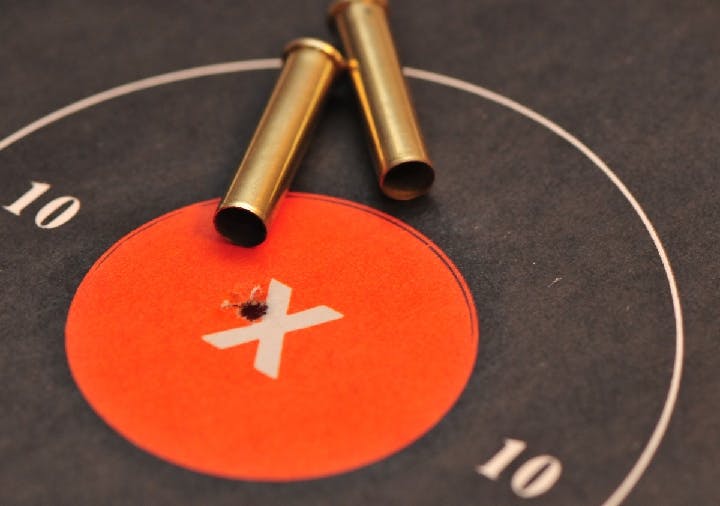Why are killers with ideological motivations more deadly?
– Laura Kurek
While smaller in prevalence than their non-ideological counterparts, ideology-driven active shooters consistently conducted attacks that were more lethal. Why?
One hundred forty-six spent cartridges litter the ground. Thirteen people lie dead. Nurses reported that the excess of spilt blood make it difficult to attend to victims. This was Fort Hood, Texas, on November 5, 2009, when U.S. Army Major Nidal Malik Hasan murdered 13 and injured 33 more with an FN 5.7 semi-automatic pistol that he purchased and trained with specifically for the occasion.
Two-and-a-half years earlier, Seung-Hui Cho held a Walther P22 and a 9mm Glock pistol. His rampage left 32 faculty and students dead in the science and mechanics building on the campus of Virginia Tech University. At the time, David Maraniss of the Washington Post wrote that April 16, 2007, was “another date of death for people to absorb, if not fully comprehend.”
At each of those dates of death, tragedy was met with shock, grief, and bafflement: Why did this happen? What were the motives? For Hasan, a self-described “soldier of Allah,” his distorted faith in Islam played a role. For Cho, the cause was less ideological than medical, an end result of inadequately treated anxiety disorders and mental illness. In the end, regardless of their motives, both Hasan and Cho picked up guns and both murdered innocent people. In that way, they are similar, but did their motives affect how they killed?
Joel Capellan asks just that question in his article “Lone Wolf Terrorist or Deranged Shooter?”, in which he investigates the role of ideology in active-shooter attacks in the United States. “Active shooter” is the clinical term for an individual trying to kill as many people as possible in a confined or congested area with a firearm and/or other weapons. Since 1970, “lone-shooter grievance-fueled violence” in the United States has killed at least 905 individuals and injured 1,094, writes Capellan. Of the 282 active-shooter attacks between 1970 and 2014, Capellan maintains that 40 events (roughly seven percent), involved ideological active shooters.
While smaller in prevalence than their non-ideological counterparts, ideology-driven active shooters consistently conducted attacks that were more lethal. Why? Because ideological killers differ in how they train, execute, and conclude their attacks.
By most measures, ideological active shooters are indistinguishable from non-ideological active shooters. In Capellan’s research, both categories are populated largely by 30-year-old white males who tend to be either bachelors or divorced, poorly educated and oftentimes jobless, and have grown dissatisfied with their disappointing lives. Ideological and non-ideological shooters demonstrate similar likelihoods of serious mental illnesses, around 50 percent. The ideological killers, however, did show a tendency to work blue-collar jobs and possess a criminal background — their fervent, radical belief systems are “intertwined with their personal frustrations and aversions toward society.”
The presence of ideology makes all the difference in the preparation, execution, and conclusion of active-shooter attacks. Ideological active shooters are more methodical. They investigate their target, surveil the location, and undergo training. Both types of shooters choose locations to which they have authorized access. Ideological perpetrators, however, choose victims and locales unknown to them — demonstrating that the crime is not personal, but is in service of a certain worldview, albeit in a violent, unforgiving way. Ideological shooters also employ a larger arsenal, using other weapons beyond just guns. Their aptitude for meticulous preparation is attributed to their captivation with the military, weaponry, and literature on lone gunmen. With greater preparation and varied weapon use, ideological active shooters consistently kill and injure more people than non-ideologues. At the conclusion of these atrocities, ideological shooters demonstrate a preference for martyrdom. Whereas non-ideological shooters attempt to flee or commit suicide, he who shoots for a cause typically does not stop the rampage until a policeman or witness kills him.
What creeds in particular motivated these individuals to kill? In Capellan’s study, 55 percent of the attacks were spurred by racial hatred in various forms (e.g. ultra-rightwing, Jihad-inspired, Black nationalist). The second most common motivating ideology was animosity towards the U.S. government, followed by anti-Western sentiments in third.
In 2009, the Department of Homeland Security declared that lone wolves and small terrorist cells constitute the most worrisome domestic terrorism threat to the U.S. Among the more troubling of Capellan’s findings is that the majority of ideology-driven active shooters do not possess official ties with terrorist or extremist organizations — groups likely to be tracked and monitored by American security agencies. Devoid of such connections, it’s much more difficult to predict, prevent, or otherwise diffuse ideological gunmen.
Whether ideological or not, grievance-fueled lone-shooter attacks are not freak one-off phenomena of the modern age in America. In fact, their frequency has increased in recent years; since 2004, there have been more active-shooter attacks in the United States than there were in the prior three decades. It’s a rising trend must be confronted, lest the “home of the brave” become anything less.
* * *
The Source: Joel A. Capellan, “Lone Wolf Terrorist or Deranged Shooter? A Study of Ideological Active Shooter Events in the United States, 1970–2014,” Studies in Conflict & Terrorism 38:6 (2015), 395-413.
Photo courtesy of Flickr/Allegra
